Analysis of impurities in diethylene glycol using msFineAnalysis AI
MSTips No. 432
Introduction
Diethylene glycol is a colorless and viscous liquid, and it is used as a raw material for a wide variety of chemicals including polyesters and antifreeze solutions. In our previous report MSTips No.043, we analyzed impurities in ethylene glycol compounds using the JMS-T100GC "AccuTOF™ GC". But because the substances were library-search unregistered (=unknown substances), the compositional formula could be suggested, but the structural formula was unknown and had to be derived manually. Qualitative analysis of trace constituents is expected to be achieved by combining highly sensitive measurements with the JMS-T2000GC AccuTOF™ GC-Alpha GC and the unknown substance structure analysis software msFineAnalysis AI. This MSTips presents the results of EI/FI measurements of diethylene glycol on a JMS-T2000GC AccuTOF™ GC-Alpha and qualitative analysis using msFineAnalysis AI.
Experiment
A commercially available diethylene glycol was used as the sample. JMS-T2000 GC AccuTOF™ GC-Alpha (JEOL) was used for GC-TOFMS measurements. GC-TOFMS measurements were performed using both EI and Field Ionization (FI) modes with the EI/FI/FD combination ion source. The qualitative data processing was performed with msFineAnalysis AI (JEOL). Measurement conditions are shown in Table 1.

JMS-T2000GC, msFineAnalysis AI
Table 1 Measurement and analysis conditions
| GC conditions | |
|---|---|
| Gas Chromatograph | 8890A GC (Agilent Technologies) |
| Column | HP-5MS UI 30 m x 0.25 mm, 0.25 μm |
| Oven Temperature | 80°C (2 min)-20°C/min -280°C (2 min) |
| Injection | 1 μL, Split mode (200:1) |
| Carrier flow | He:1.0 mL/min (Constant flow) |
| MS conditions | |
|---|---|
| Ion Source | EI/FI combination ion source |
| Ionization | EI+: 70 eV, 300 μA FI+: -10 kV, 40 mA/30 msec |
| Mass Range | m/z 10-800 |
| Data processing condition | |
| Software | msFineAnalysis AI (JEOL Ltd.) |
| Library database | NIST20 |
Results
Figure 1 shows the TIC chromatogram of diethylene glycol (Top: EI method, Bottom: FI method). A strong peak of diethylene glycol, the main component, was observed around R.T.4min. Ethylene glycol and 1,4-dioxan-2-ol were eluted before the main components, which was consistent with the NIST library research results. The results of the integrated analysis of the trace components (components A, B and C) detected after the elution of the main components are then presented in Table 2. The molecular formula information obtained through integrated analysis did not match the NIST library search results, and these components were found to be components not registered in the NIST library.
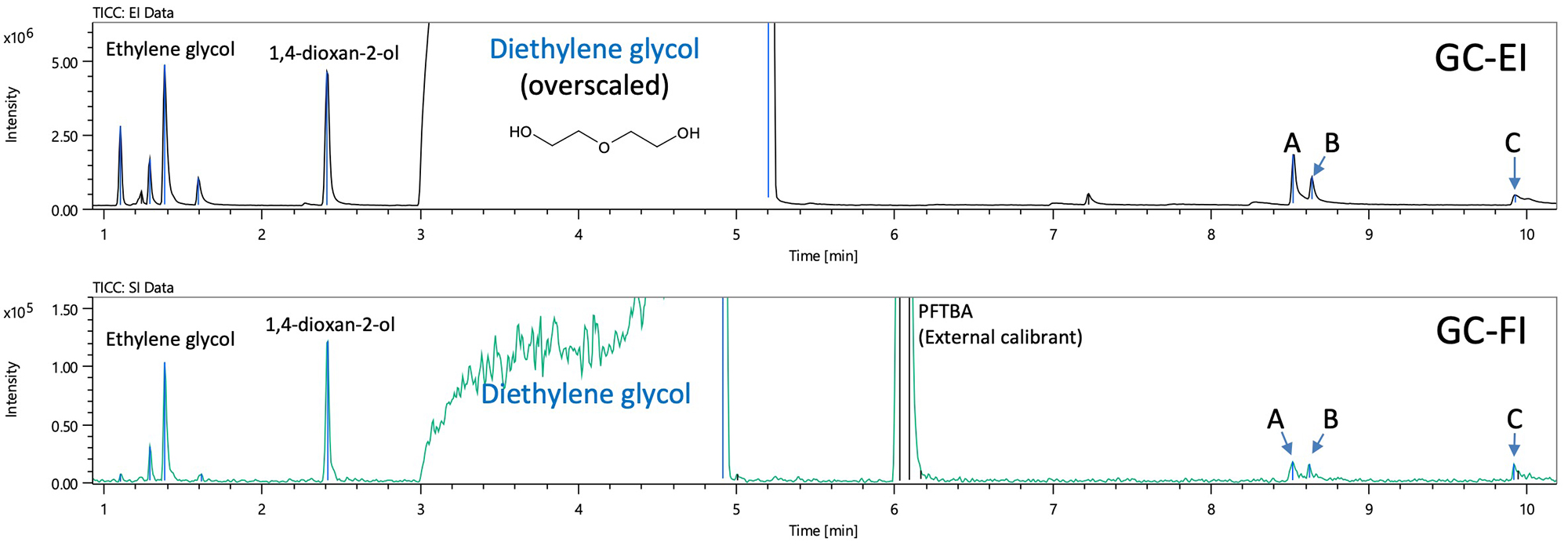
Figure 1 TIC chromatograms of EI/FI method
Table 2. Integrated qualitative analysis result for the A to C components

Figure 2 shows the mass spectra of the EI and FI methods for components A, B and C. Molecular ions were not observed in the EI method. Protonated molecule were observed by the FI method, and compositional formulae for the components could be obtained. The results of the AI structural analysis of these components A, B and C are shown next.
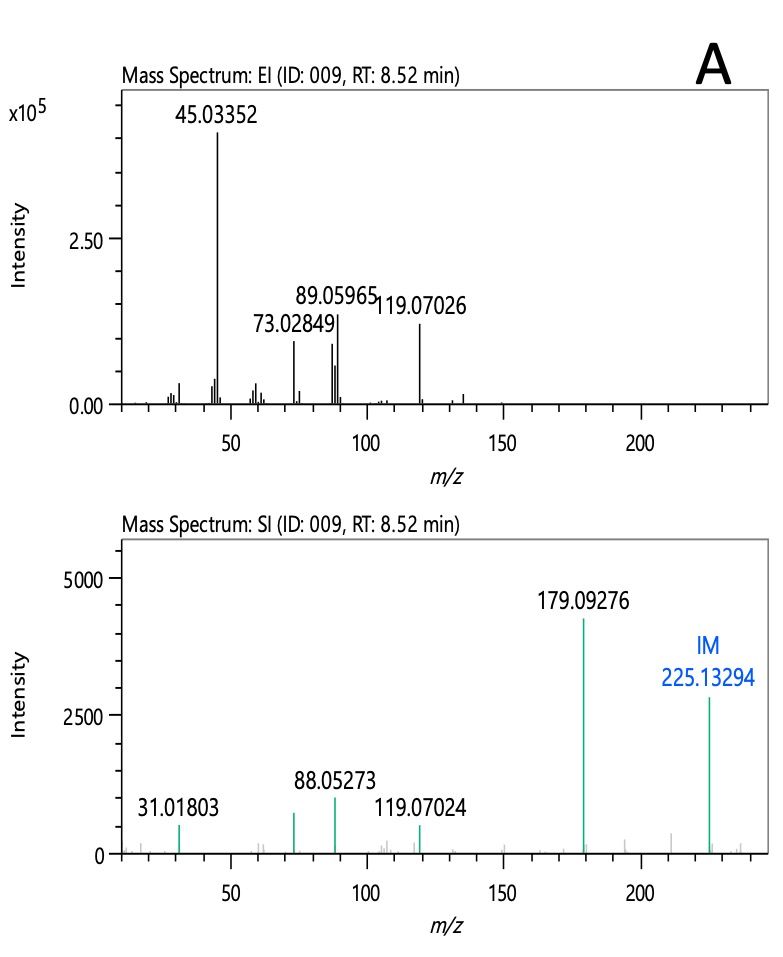
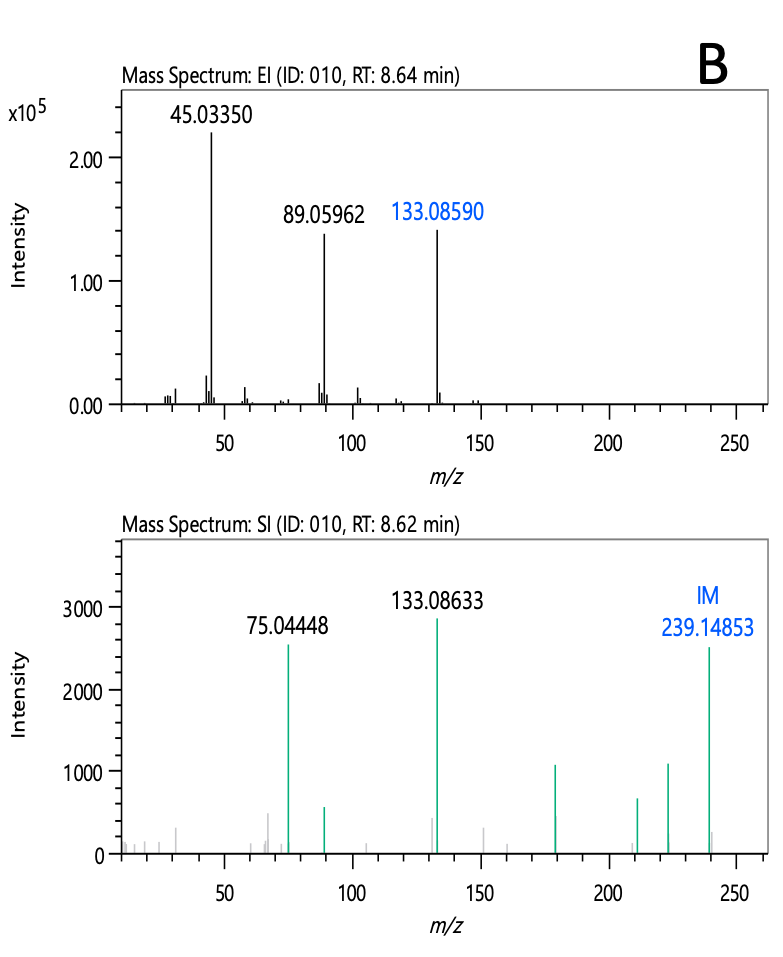
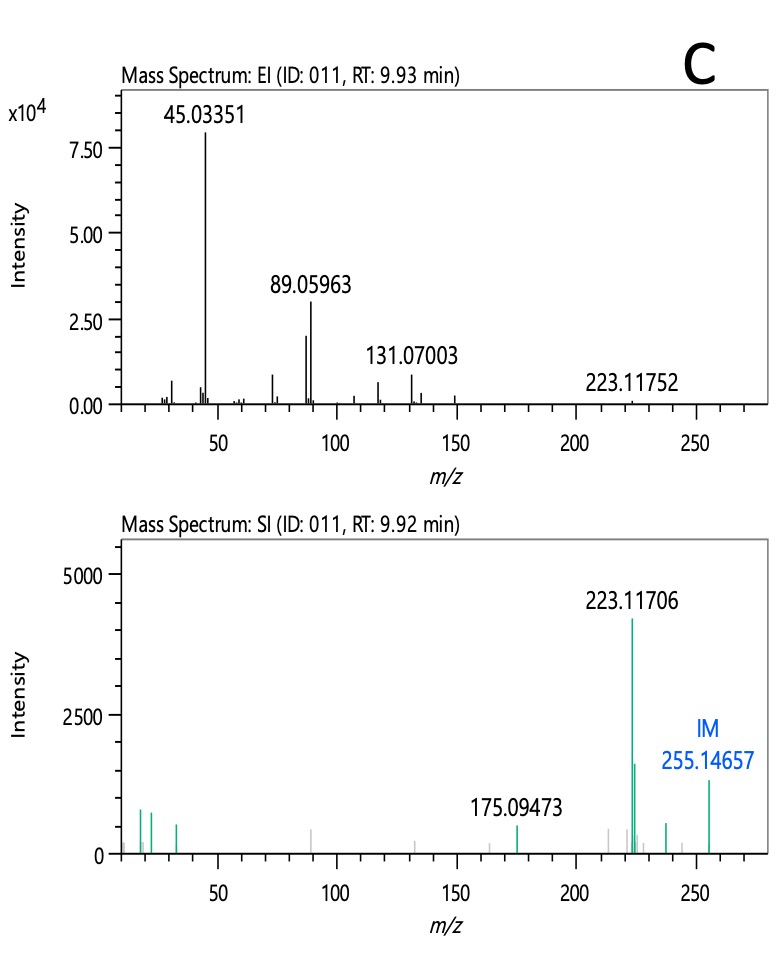
Figure 2 Mass spectrum of EI/FI method
Figure 3 shows the spectra and predicted structural formulae for the main component diethylene glycol and for A, B and C detected as impurity components. The top row is the actual measured mass spectrum and the bottom row is the mass spectrum predicted by the AI. The lower spectrum of diethylene glycol is not a predicted EI spectrum, but a mass spectrum registered in the NIST database. The three components analyzed by AI structure analysis were calculated as sufficiently possible structural formulae from the diethylene glycol structural formula.
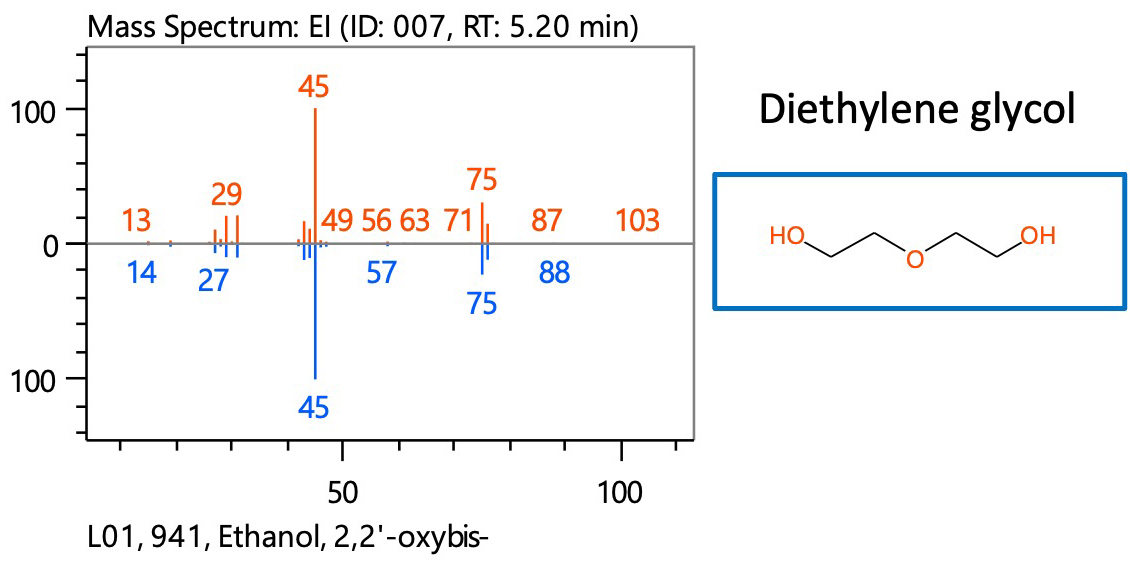
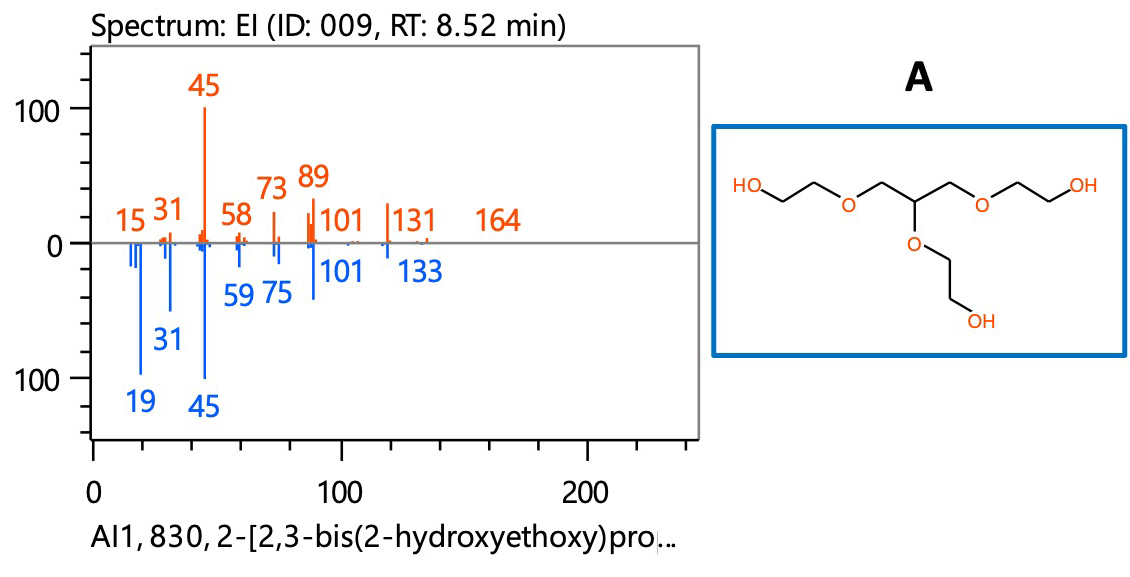
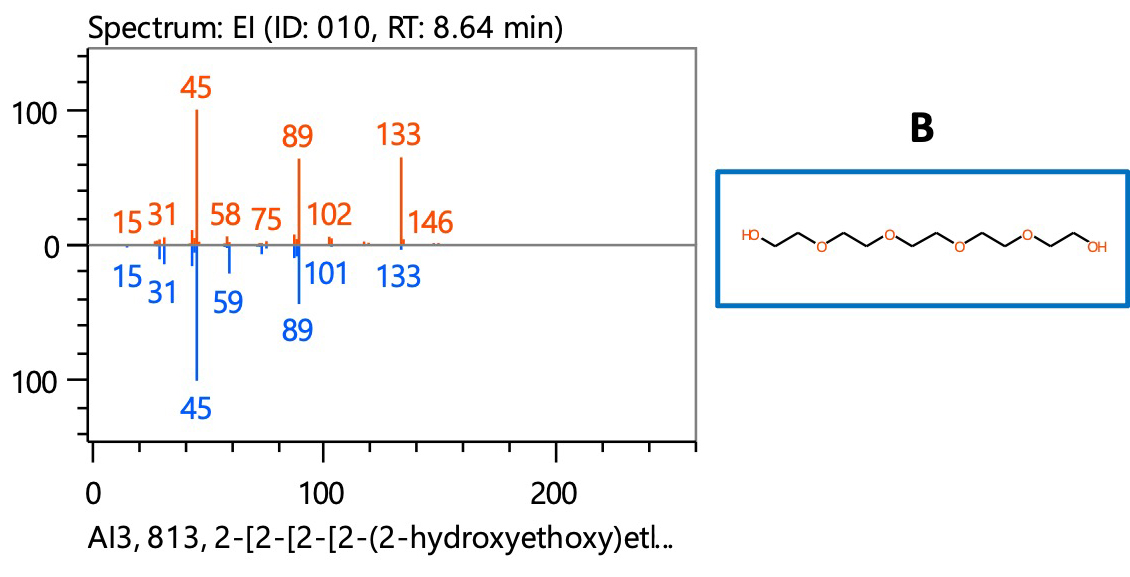
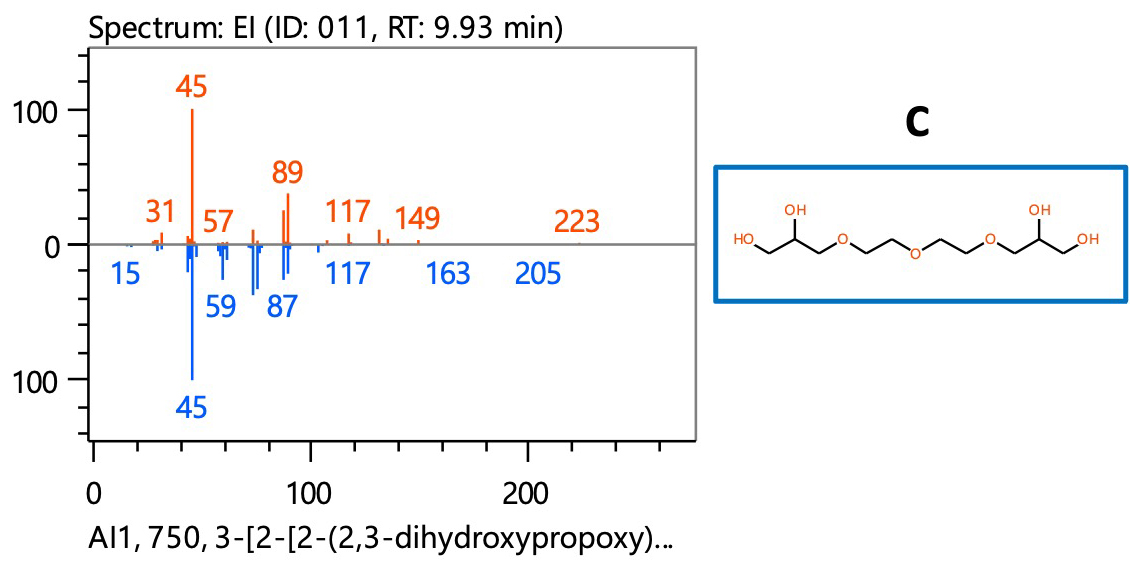
Figure 3 Measured EI mass spectra and predicted EI mass spectra of the proposed structural formula for [A], [B], [C] in Figure 1.
Conclusion
JMS-T20000GC and msFineAnalysis AI were used to analysis of impurities in diethylene glycol. AI structural analyses carried out for components A, B and C, which are not registered in the NIST library, and structural formulae were obtained that are sufficiently conceivable as impurities (related substances) in diethylene glycol. It was confirmed that JMS-T2000GC and msFineAnalysis AI software are effective for analyzing structural analysis of trace impurities.
Solutions by field
Related products
Are you a medical professional or personnel engaged in medical care?
No
Please be reminded that these pages are not intended to provide the general public with information about the products.

